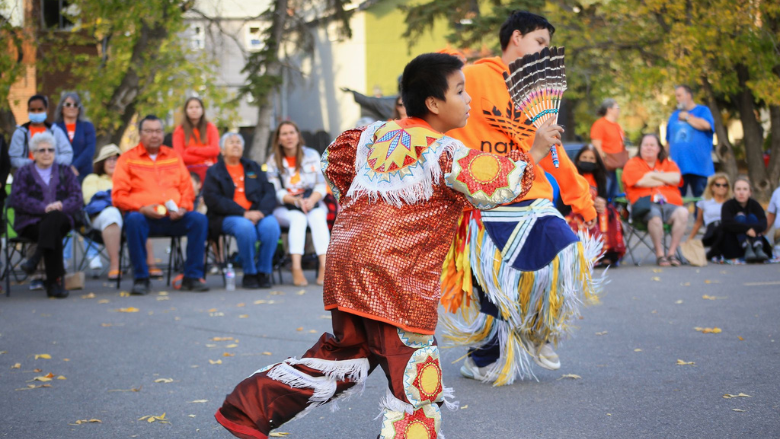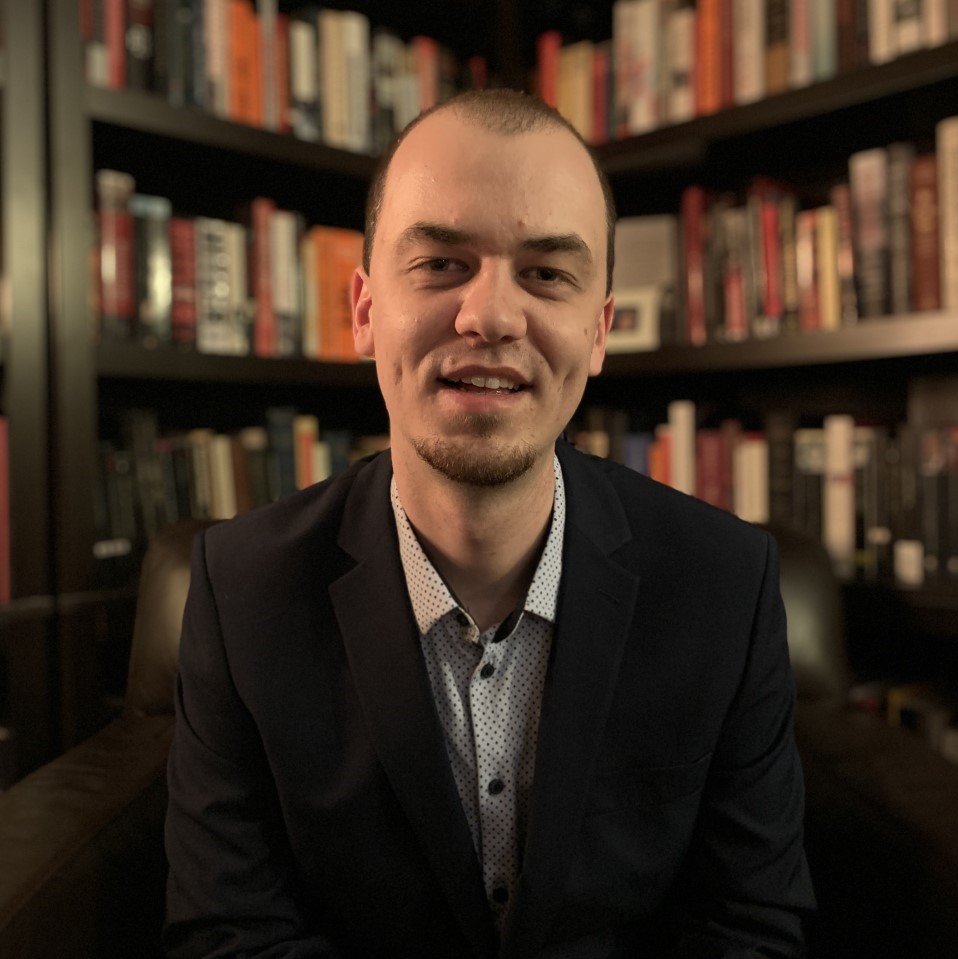
Photo Credit Gabe Dipple
By Dan Sherven
The National Day for Truth and Reconciliation was honoured by the Archdiocese of Regina, on Sept. 30, at Holy Rosary Cathedral in Regina. The event included a time of prayer in the cathedral, with smudging, and stories from a local Elder, and included prayers and songs in English and Cree.
“It’s a good development,” Archbishop Don Bolen shared, “that as a nation, we’ve chosen to have a day to mark the whole Truth and Reconciliation process.” Adding, “[it’s] a day to remember the past, to remember what Indigenous people experienced in residential schools, the struggles and suffering there. But also a day to commit ourselves to walk together in solidarity, in pursuit of healthy relations, in pursuit of justice. It’s a day of looking back to the past and looking forward.”
After the prayer ceremony, cultural experiences were led by the Littletent family outside of the cathedral. The Littletent family performed traditional Indigenous dances while giving explanations of the symbolism involved.
One dance had two children placed on a blanket. Narrating the story, Terrance Littletent explained that those children represented the children whose unmarked graves were found. Young warriors dancing in regalia, moved closer to the children. Once ‘found,’ the children stood so they too could join the dance.
“We use the blanket in many different purposes,” Terrance says. “One of them is acknowledging a person’s success in life. The blanket represents a community. When we honour somebody: either a family member; a mother, a father, a guardian, a kokum (grandmother), would cover [the honoured] individual.” He says that in the dance for the found children, “the blanket was representing Mother Earth. Mother Earth, as its children were underground … I wanted to honour those young children who were found; the remains were found.”
Bolen says for the Church; the day is about “being honest about the past.” He says there must be an acknowledgment of the Church’s involvement in “a system which crushed Indigenous people in so many ways.” He cites the elimination of Indigenous language, culture, traditions, and spirituality, and adds that today the Church must be “a community that supports.”
Phyllis Littletent co-facilitator of the events explained the day is “about amends, about atonement, and about recognizing an apology. This day is about the healing for Indigenous people. To acknowledge what happened to us, but also to understand our pain and sorrow, so that non-Indigenous people can get the sense of what our people [have] been through.”
“This day is to have [everyone] all come together, to help us heal from our past and our darknesses. It was our kokums (grandmothers) and mushums (grandfathers) that went through that. It’s very sad. Sadly, they took [our] culture and our traditions away,” adding, “Today is like asking for a chance now to heal.”
In terms of having the event outside of a cathedral, Phyllis relayed, “It really represents respect; how much Indigenous people are trying to heal from that. Sometimes at the beginning, it was hard for some people to even stand beside a church.” Adding, about the difficulty of healing, “that’s why we invite you to come and help us; come and walk with us. It’s very significant that we all stand here, [at] this church.”
The Catholic Bishops of Canada made a 30-million-dollar commitment for Truth and Reconciliation efforts. The Archdiocese of Regina committed 2-million dollars over five years. Those efforts will be focused on Healing and Reconciliation for communities and families, culture and language revitalization, education and community building, and dialogues for promoting Indigenous spirituality and culture.
Bolen noted how the United Nations Declaration on the Rights of Indigenous Peoples, “is something of a roadmap for healthy relations. The Church supports the United Nations Declaration, but to make that support active and tangible, that’s a challenge not only for the Church but for our whole society. And it means being involved in healing and reconciliation efforts; listening to and walking with survivors, in ways that they find helpful.”
“You could tell, the allies, the ones that walk with us; they understand our pain and sorrow, and they want to help us.” Phyllis said, adding, “what we’re trying to do is just say: ‘Hey, the Creator intended us all to walk together from the beginning.’”
When asked about the role of the Holy Spirit in reconciliation, Bolen remarked, “I see so many non-Indigenous wanting to walk with Indigenous peoples. I see a much greater readiness to acknowledge the suffering of the past that Indigenous people experienced. A much greater understanding of colonization and what it did. A much greater desire to be allies and ask, or look for ways in which they can be allies.”
For those who might be skeptical of the event, Bolen is encouraging, “I would invite them to come out and see for themselves what it’s like to see a beautiful Indigenous celebration with dancers and drumming and storytelling and bright colours and joy. Joy. Giftedness. I would invite them to listen to the wisdom of Indigenous people.”
In closing, Phyllis emphasizes, “we all pray to the same Creator … My kokum and mushum used to say, ‘wherever there’s prayer, go there.’”
 |
Dan Sherven is the author of three books: Light and Dark, the #1 Amazon Bestseller Classified: Off the Beat ‘N Path, and Live to the Point of Tears. He holds a Bachelor’s of Philosophy, and a Bachelor’s of Journalism. Sherven currently writes for Word on Fire, The Symbolic World, the Homiletic and Pastoral Review, and the Archdiocese of Regina. Here, you can find his work. |

